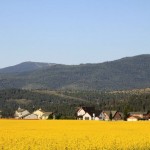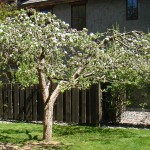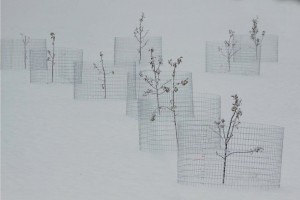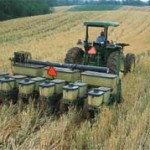by Catherine Haug, August 1, 2012
A few weeks ago, canola fields were in bloom all around the Flathead valley. You will recognize them by their bright yellow blooms as in the photo by Devvi Morgan, right.
But despite their sunny look, their disposition is not so sunny. Most, if not all, of these crops are Roundup-Ready® Canola (1), a GMO crop. This means that even IF the GMO aspect were harmless (which I don’t believe is the case), these crops are heavily sprayed with Roundup to control weeds. They may also be heavily sprayed with insecticides. These sprays are then present in the air we breathe and get into the groundwater, and can contaminate our drinking water.
Did you know that canola seeds spread rapidly and cross-pollinate with many other brassicas including turnips, broccoli raab, some kales, rutabaga, and possibly radish and broccoli, according to research at Oregon State University? This means that if you have any of these growing in your garden, their seeds could be contaminated with GMO DNA from the canola. If you are a seed saver, you may not want to save these.
Apart from the GMO aspect, canola poses other health risks.



